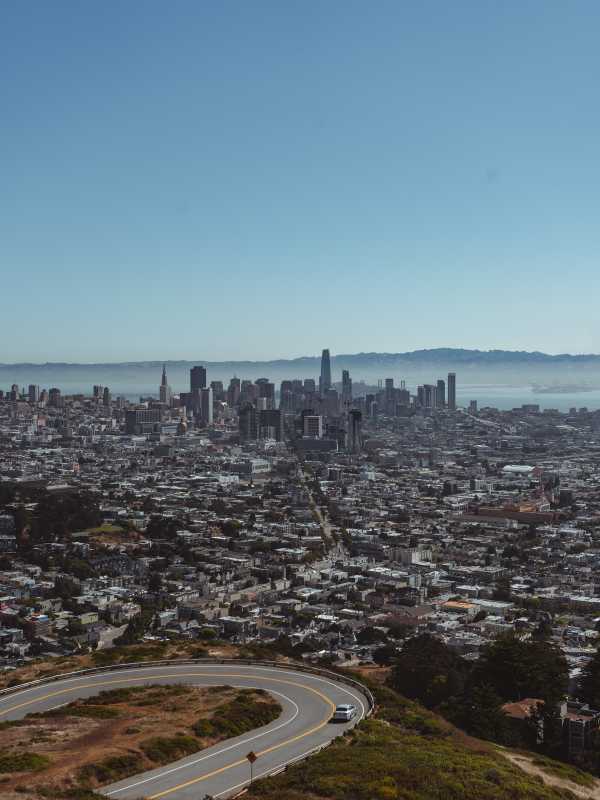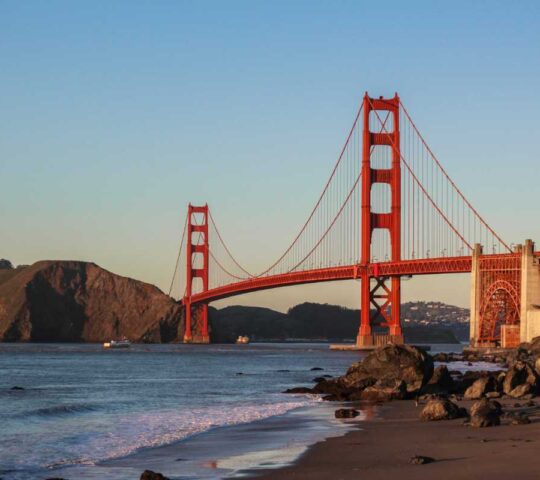Twin Peaks, one of San Francisco’s most iconic attractions, offers breathtaking views of the city from its towering peak. Located in the geographic center of San Francisco, this scenic viewpoint attracts millions of tourists each year who are drawn to its panoramic vistas, scenic beauty, and tranquil atmosphere.
History and Features
Delve into the fascinating history and features of Twin Peaks, a pair of iconic hills situated in the heart of San Francisco. These two summits have not only become a symbol of the city but also a treasure trove of natural beauty and intriguing stories.
The origins of Twin Peaks date back to the early Spanish settlers in the 18th century. They named the hills “Los Pechos de la Choca,” which translates to “Breasts of the Maiden.” Over time, the name evolved into Twin Peaks, reflecting the duo’s symmetrical appearance. The hills, which rise more than 900 feet above sea level, are among the highest points in San Francisco, providing unparalleled views of the city and its surroundings.
Throughout history, this area has played a pivotal role in the development of San Francisco. The peaks were once part of the Rancho San Miguel, a Mexican land grant given to José de Jesús Noé in 1845. Following the Mexican-American War, the land was eventually claimed by the United States, and San Francisco’s rapid growth soon engulfed the surrounding areas. In the late 19th and early 20th centuries, the hills were considered for residential development, but the steep terrain and strong winds proved challenging. Ultimately, the area was preserved as a natural space for the enjoyment of residents and visitors alike.
Today, Twin Peaks is home to a diverse ecosystem that includes native flora and fauna. The slopes are adorned with coastal scrub and grassland habitats, supporting a variety of plant species such as coyote brush, lupine, and California sagebrush. Wildlife enthusiasts might also catch a glimpse of red-tailed hawks, coyotes, or the rare mission blue butterfly that inhabits the area.
The Twin Peaks Natural Area, a 64-acre park, helps protect the delicate ecosystem while offering visitors well-maintained trails to explore. As you hike up the paths, you’ll encounter a mix of paved and unpaved sections, as well as viewing platforms and informative signage. One particularly noteworthy feature is the curvy Twin Peaks Boulevard, which winds its way up the slopes, providing a scenic drive and access to the Christmas Tree Point lookout.
At the summit, visitors will find Sutro Tower, a prominent San Francisco landmark. This 977-foot-tall radio and television transmission tower is visible from many parts of the city and adds a unique element to the Twin Peaks experience.
Nearby Attractions
Twin Peaks is just one of the many attractions in San Francisco that visitors can enjoy. Just a short distance away, visitors can explore the charming neighborhoods of Castro, Noe Valley, and Haight-Ashbury, each with its unique personality and character. For those interested in cultural attractions, San Francisco is home to some of the world’s finest museums, including the San Francisco Museum of Modern Art and the de Young Museum.
Getting There
Visitors can easily reach the Twin Peaks by car, bike, or public transportation. The address of Twin Peaks is 501 Twin Peaks Blvd, San Francisco, CA 94114. If you’re traveling by car, there is plenty of parking available at the lookout point. Alternatively, visitors can take public transportation, such as the MUNI bus or cable car, which stop at various locations near the park.
Final Thoughts
Whether you’re a San Francisco local or a tourist, it is a must-see destination that offers unparalleled views of the city and a chance to escape the city’s hustle and bustle. So pack your camera and head to Twin Peaks for a memorable San Francisco experience!
FAQ's
What is the history of Twin Peaks?
Twin Peaks' history dates back to the 18th century when Spanish settlers named the hills "Los Pechos de la Choca" (Breasts of the Maiden). The hills were part of the Rancho San Miguel land grant and were later preserved as a natural space for public enjoyment.
What are some of the notable features of Twin Peaks?
Twin Peaks is known for its picturesque views, diverse ecosystem, well-maintained trails, and the iconic Sutro Tower. The peaks also offer a mix of paved and unpaved trails, viewing platforms, and informative signage.
What is the best way to reach Twin Peaks?
Driving is the most popular option to reach Twin Peaks, with parking available at the summit. Alternatively, the 37 Corbett Muni bus line can take you near the base of the hills, or you can choose to hike up the scenic trails.
When is the best time to visit Twin Peaks?
The ideal time to visit Twin Peaks is during early mornings or late afternoons when temperatures are cooler, crowds are thinner, and the opportunity to witness stunning sunrises or sunsets is o
What should I wear when visiting Twin Peaks?
Dress in layers to combat the strong winds that often accompany the peaks. Comfortable shoes are also recommended for exploring the trails.
Are there any nearby attractions to visit while at Twin Peaks?
Yes, nearby attractions include the Castro District, Golden Gate Park, and the Painted Ladies. These attractions offer a variety of experiences, from cultural exploration to tranquil walking paths and architectural marvels.
Is Twin Peaks a good place for taking photos?
Absolutely! Twin Peaks is an excellent location for capturing stunning cityscapes, surrounding landscapes, and memorable moments. Bring your camera to create lasting memories of your San Francisco adventure.




